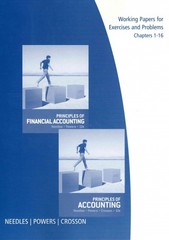111111111111
The Pacific Boat Company, which is under contract to the Navy, assembles troop deployment boats. As part of its research program, it completes the assembly of the first of a new model (PT109) of deployment boats. The Navy is impressed with ting direct labour PT109s. the PT 109. It requests that Pacific Boat submit a proposal on the cost of producing another six PT109s. Pacific Boat reports the following cost information for the first PT 109 assembled and uses a 90% cumulative average-time learning model as . 152004.Requirement 1. Calculate predicted total costs of producing the six PT109s for the Navy. (Pacific Boat will keep the first deployment boat assembled, costed at $1,477,600, as a demonstration model for potential customers.) Begin by determining the hours used to produce the six PT109s for the Navy. (Round your answers to the nearest whole number.) The total cumulative time in labour-hours for seven PT 109s is hours; therefore, the total time to produce six PT109s is hours . Now calculate the predicted total costs of producing the six PT 109s. (Round your answers to the nearest whole dollar.) Direct materials Direct manufacturing labour Variable manufacturing overhead Other manufacturing overhead Total costsDirect material cost $199,000 Direct manufacturing labour time for first boat 14,700 labour-hours Direct manufacturing labour rate $42 per direct manufacturing labour-hour Variable manufacturing overhead cost $26 per direct manufacturing labour-hour Other manufacturing overhead 20% of direct manufacturing labour costs Tooling costs $279,000 Learning curve for manufacturing labour time per boat 90% cumulative average time a Tooling can be reused at no extra cost because all of its cost has been assigned to the first deployment boat. In 0.90 0.105361 b Using the formula for a 90% learning curve, b = In 2 0.693147 = - 0. 152004Requirement 2. What is the dollar amount of the difference between (a) the predicted total costs for producing the six PT109s in requirement 1, and (b) the predicted total costs for producing the six PT109s, assuming that there is no learning curve for direct manufacturing labour? That is, for (b) assume a linear function for units produced and direct manufacturing labour-hours. Begin by calculating the predicted total costs for producing the six PT109s, assuming that there is no learning curve for direct manufacturing labour. (Round your answers to the nearest whole dollar.) Direct materials Direct manufacturing labour Variable manufacturing overhead Other manufacturing overhead Total costs The difference between (a) requirement 1's predicted total costs and (b) predicted total costs with no learning curve is $










